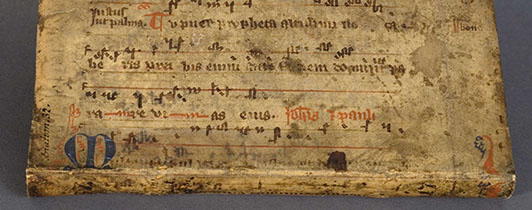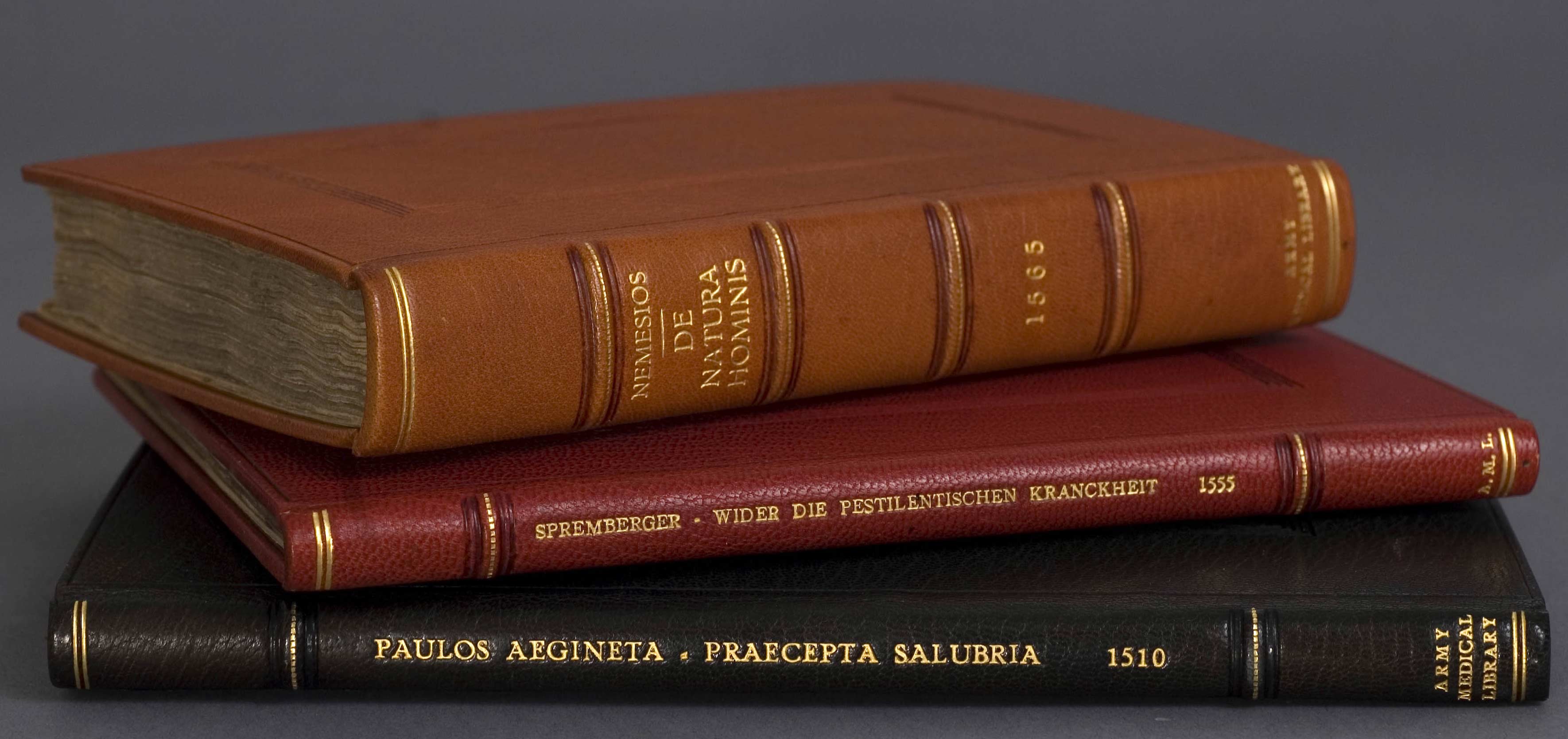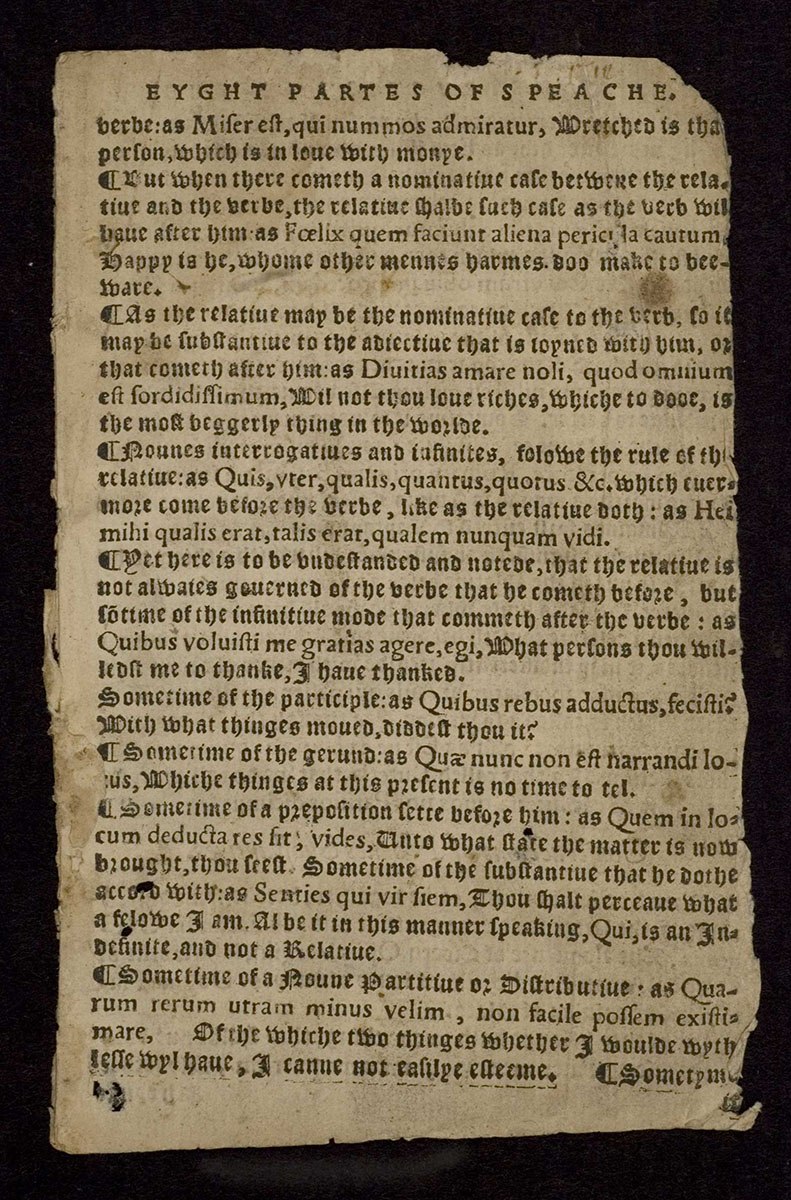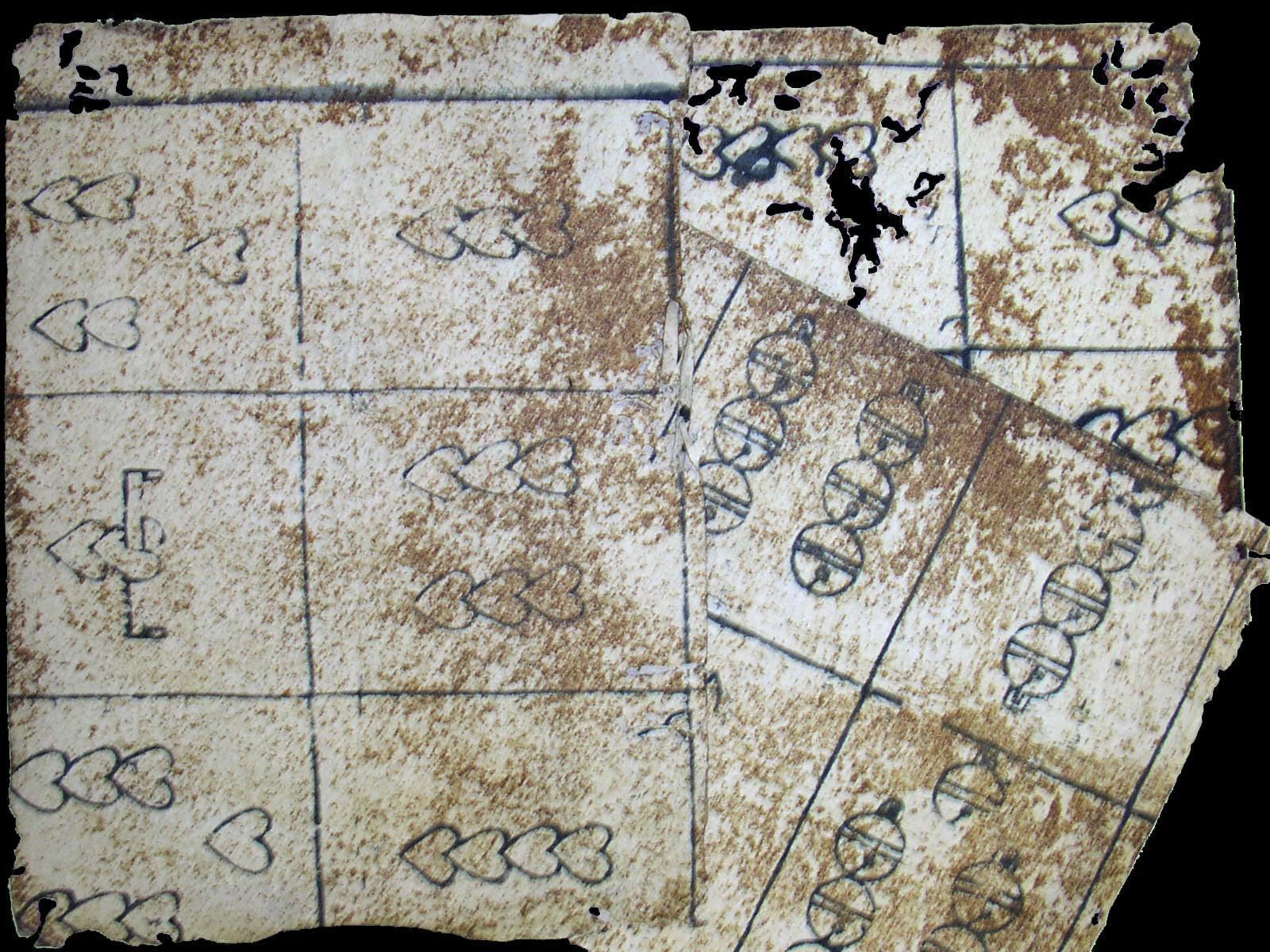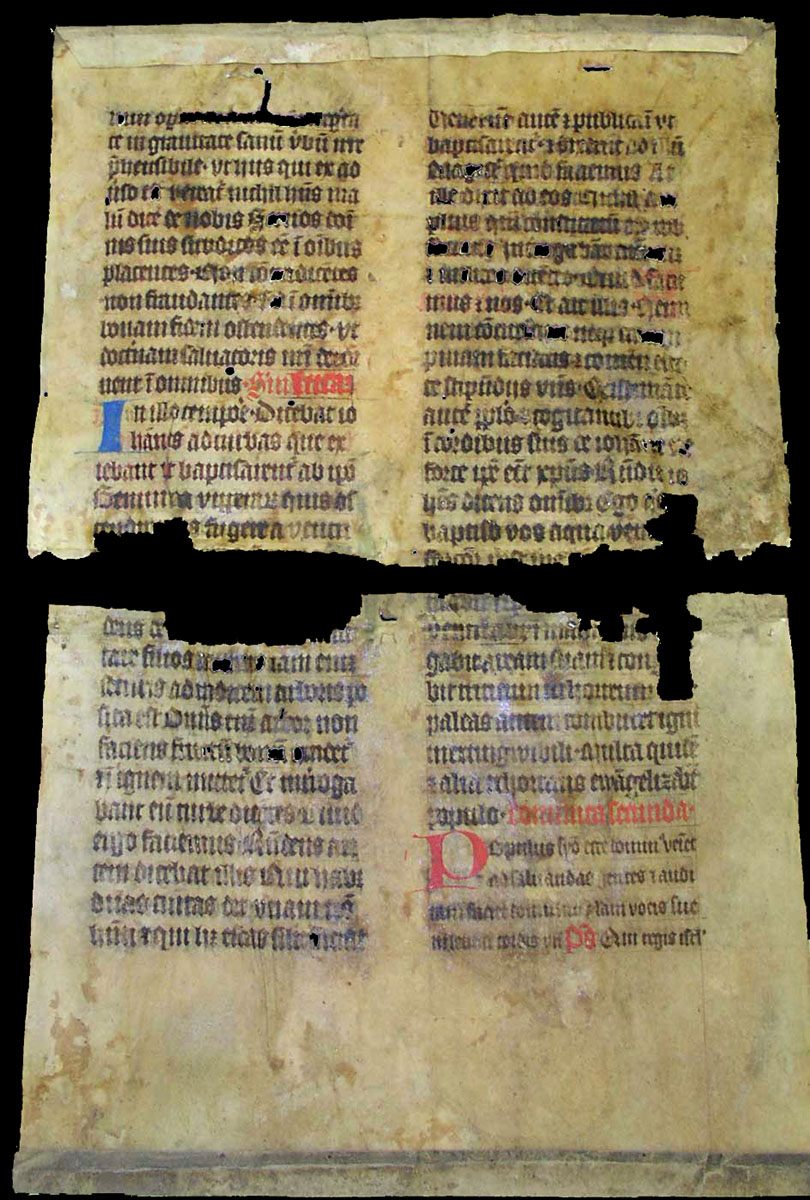The Bathtub collection items are both interesting in themselves and valuable for scholarly purposes. Occasionally a previously unknown text or printed edition is discovered in the binding of a book. More often, the materials shed light on the history of the volume whose binding they comprise. A book published in Lyon in 1525 with a binding made up of printed pages in Dutch and a calendar for 1525, show that the book traveled to the Low Lands soon after its publication. A book published in Venice in 1573 has in its binding several items of the late 16th and early 17th century from southern Germany. However, one must not assume that the binding is contemporary with the book, or the re-used material contemporary with the binding.
But besides their research use, a browse through the Bathtub Collection is a fascinating pastime. There’s no telling what you might find. We invite you to come and have a look.
Here are a few of the items in the Bathtub Collection and the books they once bound. Some of the books have been rebound in modern covers; others have new boards with the original leather covering placed over them.
The Schullian numbers refer to Schullian’s article (Downlad PDF: https://www.nlm.nih.gov/exhibition/bathtub/leaves.pdf).
A 16th-Century Prayer Book
Found in: Paulus, Aegineta. Praecepta salubria. (Paris: Henri Estienne, 1510).
National Library of Medicine: 2274054R; Schullian: 68
A 16th-Century Latin/English Grammar
Found in: Nemesius, Bishop of Emesa. Peri physeos anthropou. (Antwerp: Christophe Plantin, 1565).
National Library of Medicine: 2271008R; Schullian: 67
Uncut Sheets of Playing Cards
Found in: Johann Spremberger. Ein kurtzer und gründlicher Bericht ... wider die pestilentischen Kranckheit. (Breslau: Crispin Scharffenberg, 1555).
National Library of Medicine: 2286035R; Schullian: 85
Uncut Sheet of Lottery Tickets from Maestricht, 1788
Found in: Andrew Harper. Abhandlung über die wahre Ursache und Heilung des Wahnsinns. (Marburg: Nene Akademischen Buchhandlung, 1792).
National Library of Medicine: 2681269R; Schullian: 85
A Late Medieval Manuscript in a Gothic Script
Found in: Giulio Cesare Aranzi. De humano foetu liber tertio. (Marburg: Nene Akademischen Buchhandlung, 1792).
The page was turned horizontally and wrapped around the book—the turn-ins are clearly visible. The part that covered the spine is gone, but a slit cut for a sewing cord is still clear.
National Library of Medicine: 2215020R
Musical Notation
Caspar Bauhin. Institutiones anatomicae corporis virilis et muliebris historiam exhibentes. (Lyon: Joannes le Preux, 1604).
The cover is a late medieval vellum manuscript of chant written in German-style notation. Note the later shelving mark near the top of the cover: “anatom. 32". Inside the back cover is more music entitled “Aenigma musica” [musical puzzle], perhaps written by the book’s owner, Johann Roesner, pastor in Rosenbach, who died in 1609, according to a note on the front endpage. Perhaps he was a music lover who deliberately chose the covers.
National Library of Medicine: 2308020R
Beyond the Bathtub Collection
Many books in the History of Medicine collection still have their original bindings. Whatever discarded paper and vellum bits were used by the binders are still in place. Binders used scraps as endpapers and board covers, which we can easily see. But they also used scraps as spine linings or made up cover boards out of pasted layers of printed or manuscript paper. We can only speculate about the history that may lie still hidden from view.
Memoirs of Dr. Joseph Priestley
Joseph Priestley. (Northumberland [Pa.]: John Binns, 1806).
Scrap paper was still being used in the 19th century. This binding, which is much later than the book, has its spine lined with newspaper. A binder’s label inside provides the name “A. Zichtl, 513 7th St. N.W.”, possibly a Washington, D.C. address.
National Library of Medicine: 8411763
Last Reviewed: July 8, 2020

